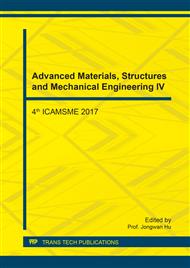p.3
p.9
p.14
p.20
p.26
p.32
p.37
p.42
Influence of Heat Treatment on Interface Structure of Stainless Steel/Gray Iron Bimetallic Layered Castings
Abstract:
The present study is undertaken to investigate the influence of annealing and normalizing heat treatment on the bimetallic interface microstructures of 304 stainless steel and gray cast iron. The current work is aim to control the bimetal interface microstructures by different types of heat treatment processes to improve performance of the bimetallic castings performance. For low temperature annealing, specimens are heated to 760 0C for 60 min in an electrical heating furnace. For high temperature annealing and normalizing, specimens are heated to 920 0C for 120 and 240 min. A different interface structures are obained for all heat treated samples. Annealing and normalizing induce a significant effect on the diffusion of C and Cr elements and slightly effect on the diffusion of Ni element. Thickness of interface layer 1 (austenite + carbide) increases by increasingthe annealing temperature.
Info:
Periodical:
Pages:
3-8
Citation:
Online since:
November 2017
Keywords:
Price:
Сopyright:
© 2017 Trans Tech Publications Ltd. All Rights Reserved
Share:
Citation:


